The Fageda d’en Jordà is a beech forest located in the La Garrotxa Volcanic Zone, approximately one hundred kilometres northeast of Barcelona.
The forest is a popular day trip from Barcelona, especially in mid to late November when the leaves turn golden brown, making the area incredibly photogenic.
Whatever time of year you plan to visit, a walk in the Fageda d’en Jordà is an ideal way to escape the hustle and bustle of te city and, if you have a car, it can easily be combined with a visit to the volcanoes and medieval villages nearby.

Walking routes in the Fageda d’en Jordà
There are two marked hiking trails in the Fageda d’en Jorda. The first is a fifteen-kilometre circular route that takes you through the forest and across two of the largest volcanoes in the area.
The other, shorter and less demanding route is the Joan Maragall Trail which takes you into the heart of the forest and is suitable for walkers of all ages.
The Joan Maragall Trail (Route 2)
The trail starts next to the visitors centre by the Can Serra car park and is approximately one and a half kilometres long. The path is flat and easy-going and, at a very leisurely pace, you can expect it to take between half an hour and forty-five minutes to complete.

The footpath starts just in front of the visitors centre and crosses underneath the GI-524 road, which runs from Olot to Santa Pau.
It then slopes gently upwards and passes a stone obelisk dedicated to Joan Maragall, a nineteenth-century Catalan poet who was inspired by the forest’s beauty and tranquillity. From here, the path continues down a few steps into the heart of the forest.
In theory, this is a circular route. But as you can see from the map below, it’s actually a there-and-back route with a loop around a small hillock called a “tossol”, which is a geological formation characteristic of lava flows.
After walking around the tossol, you double back and follow the footpath back to the car park. The path is well worn, and there are signposts at the intersection with Route 1, so you don’t need to worry about getting lost.
If you want to spend longer in the forest but don’t fancy tackling the longer trail (which takes about three and a half to four hours), there are numerous other unmarked footpaths that crisscross the forest.
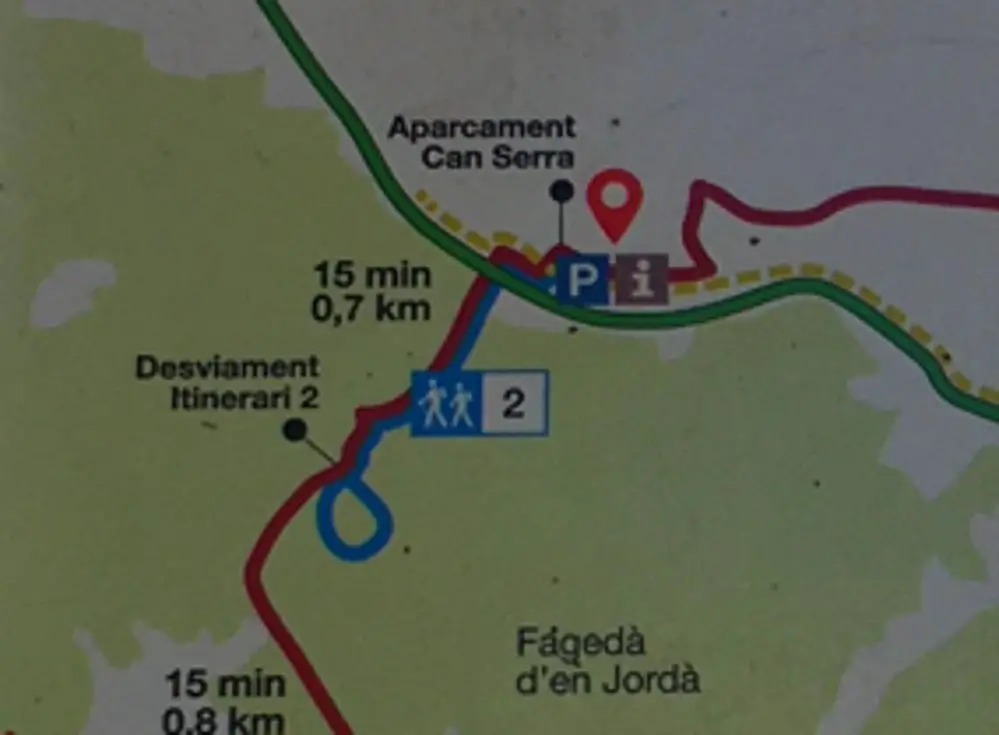
How to get to the Fageda d’en Jordà from Barcelona
By Car
Although it is possible to visit the Fageda d’en Jorda using public transport, it’s way more convenient to get there by car.
The forest is four kilometres from Olot on the GI-524. To get there from Barcelona, take the C-17 to Vic followed by the C-37 to Olot. If you’re using Google Maps, look for “Aparcament de la Fageda d’en Jorda”.
For the return journey, if you have time, I recommend that you continue along the GI-524 to the medieval village of Santa Pau and then on to Banyoles before returning to Barcelona via the AP7.
By Bus
It is also possible to get to the Fageda d’en Jordà using public transport. Bus company TEISA runs four buses per day from Barcelona to Olot. Check timetables and fares here.
From here, you can walk to the beech forest following Route 3 which starts at the bus station in Olot.
Alternatively, there are four buses daily from Olot to Santa Pau, which stop at the Fageda d’en Jorda car park. If you decide to visit by bus I recommend that you contact TEISA in advance to make sure that the buses are running.
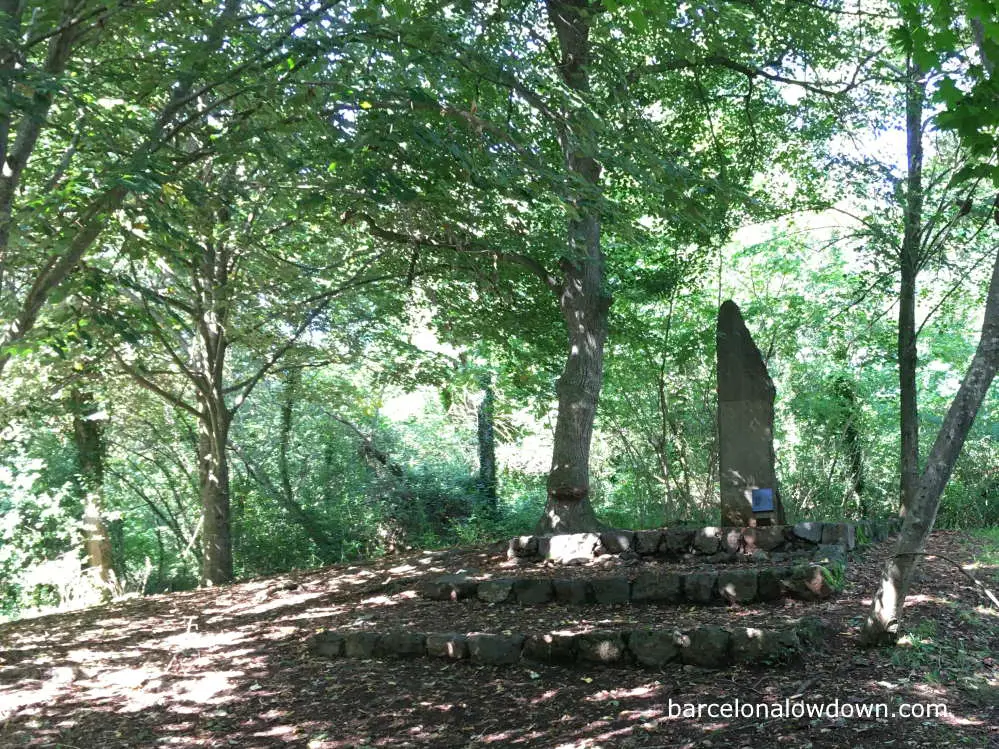
Where to park when visiting the Fageda d’en Jordà
The best place to park is the Fageda d’en Jordà car park at Can Serra. The car park has a visitors centre with public toilets and vending machines where you can purchase snacks and soft drinks.
The car park currently costs €0.034 per minute payable at the machines located next to the visitors centre. Once you have paid for your ticket, you have twenty minutes in which to leave the car park.
Where to stay in the Fageda d’en Jordà
The first time we visited, we spent the weekend in our campervan at Camping La Fageda, which is a nice, rural campsite with a restaurant and chalet accommodation. There are also several hotels in Santa Pau, which is one of the prettiest medieval villages in the area.

Things to do near the Fageda d’en Jordà
Horse drawn carriage trips
If you are travelling with children or just don’t fancy walking, you can also take a trip in a horse-drawn carriage into the forest. The trips depart from in front of the car park and last approximately one hour.
At the time of writing, it costs €10 for adults, €8 for 6-12-year-olds and €5 for five-year-olds and under. You can purchase tickets from the ticket office near the entrance to the car park.
Croscat volcano
The Fageda d’en Jorda beech forest grows on the lava flows of the Croscat volcano, which last erupted approximately fourteen thousand years ago. You can visit the volcano by following Route 1 from the car park.
During the 1960s and 70s, the volcano was mined for the extraction of clay. The quarry closed in 1991, leaving a vast triangular scar that gives a unique view inside the volcano. There’s a small visitor centre at the quarry entrance, which explains how the volcano formed.
If you have a car, you could also drive to the Santa Margarida car park and then walk along Route 15 to the quarry. There’s more information in this post.

Santa Pau
The tiny village of Santa Pau (population 600) is one of the prettiest villages in the Garrotxa Volcanic Zone. The medieval town centre is a huddle of stone houses clustered around a small rectangular castle, with a history that can be traced back to the ninth century.
Balloon tours of the Garrotxa Volcanic Zone
There’s been a lot of talk of volcanoes in this post but, to make things clear, the forty volcanoes of the Garrotxa Volcanic Zone bear little resemblance to the snow-capped peaks that you might have seen in Asia or South America.
The Garrotxa volcanoes last erupted more than eleven thousand years ago and the highest of them rises to an altitude of just 189m above sea level. Although one of them does have a crater, to the casual observer they mostly look like tree-covered hills.
If you want to get a view like the photos in the leaflets that are handed out at the local Tourist Information offices, you’ll need to take an early morning balloon flight.


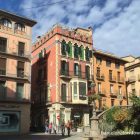
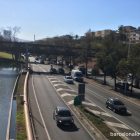
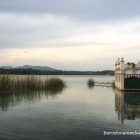
Thank you Richard for shedding light on this
You’re welcome, Martin.